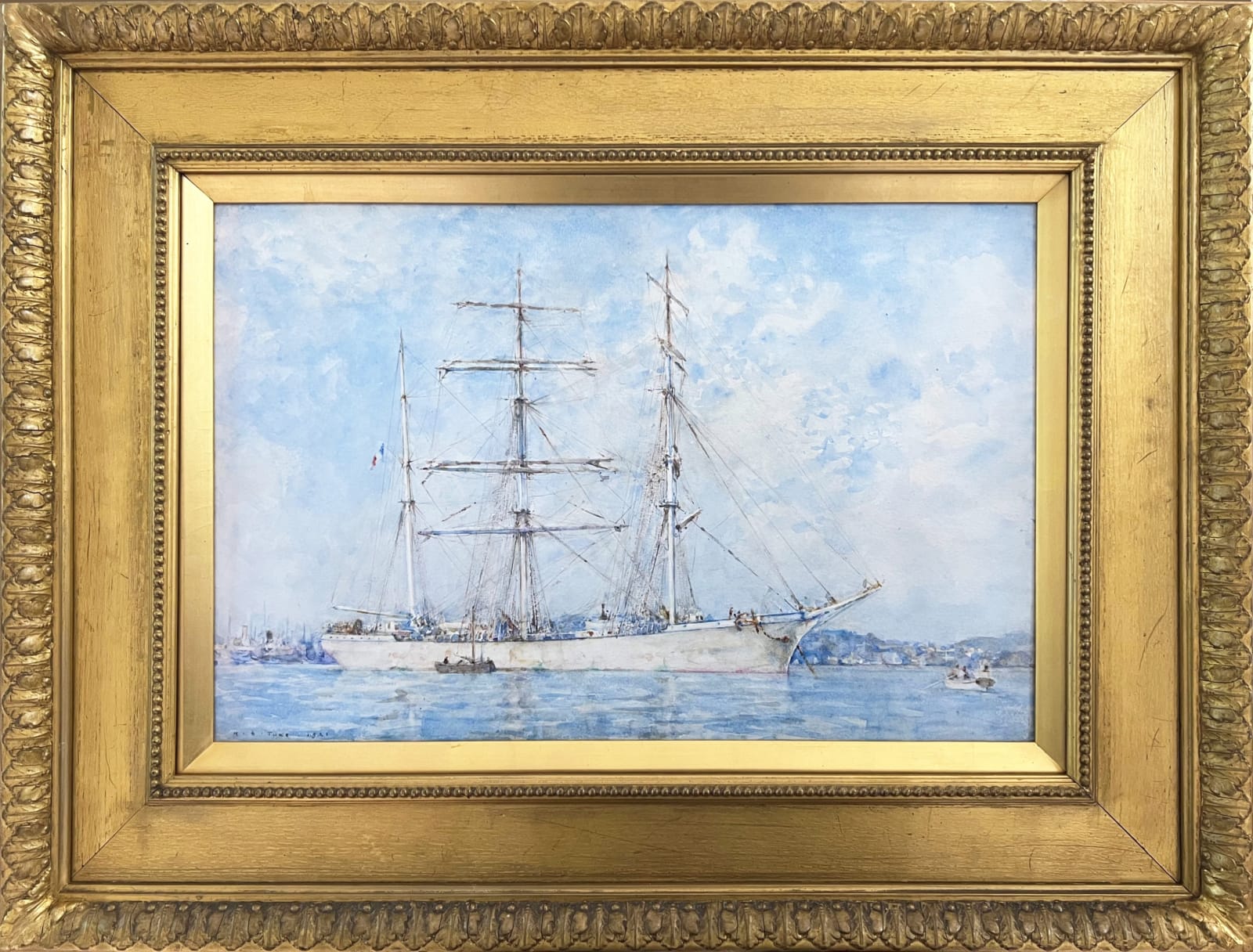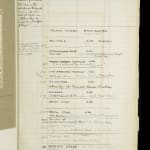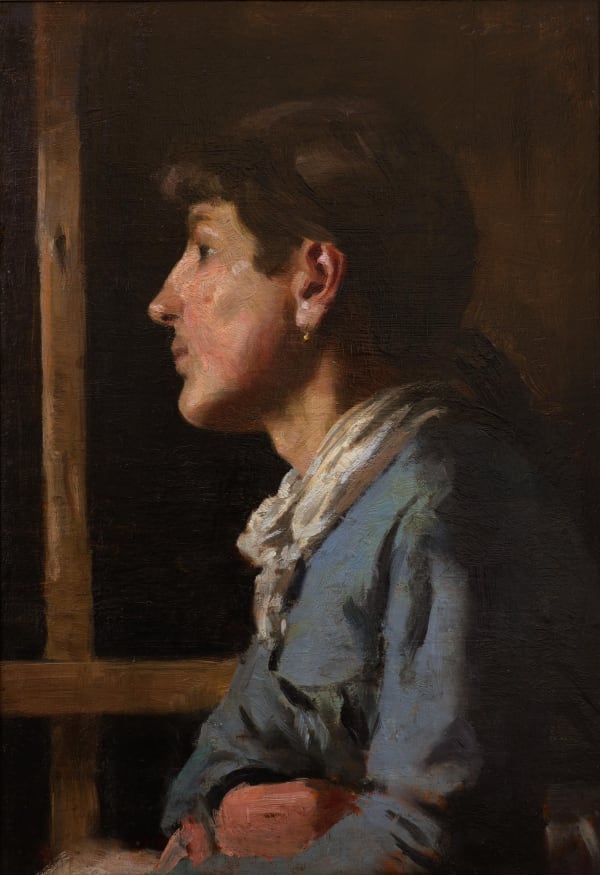
French Barque "Joinville" 1921 by Henry Scott Tuke

Tuke's register of the sale of 'French Barque "Joinville"'
Henry Scott Tuke 1858-1929
Framed: 51.3 x 67.3 cm (20 3/16 x 26 1/2 in.)
Further images
Provenance
Acquired by Miss Black, Maenporth 1925. The Estate of a Dorset collector.Exhibitions
Liverpool Autumn Exhibition, 1924Literature
Tuke's Register: FRENCH BARQUE. "JOINVILLE". To Miss Black of the Crag; Maenporth (Jun-July 1925)Henry Scott Tuke was arguably most progressive as a painter in his watercolour works where he embraced impressionism. His friend and Falmouth peer Charles Napier Hemy, had a tendency to approach watercolour and oil paintings with the same boldness and heavy brushwork. Tuke on the other hand mastered the medium of watercolour and its particular qualities developing a distinctly impressionist and delicate style which is entirely different to his approach in oils. Watercolours allowed Tuke more spontaneity and indulged a natural instinct to capture his impression of the subject. His particular interest was in capturing the light on the water. He never used black in his shadows, but an intense ultramarine blue gives them intensity.
Tuke revelled in the detail of a fully rigged barque and since childhood could draw such from memory. His choice of Falmouth was predicated upon the opportunity it presented to capture square rigged sailing ships. Most of Tuke’s marine paintings were, like the present work, of ships anchored in Falmouth’s deep-water harbour through to Carrick Roads. Often the white metal hulls were observed with orange or red rust showing on the waterline. Tuke continued to record tall ships in Falmouth in watercolour up until 1927 and ‘French Barque "Joinville"’ is a fine example, with the vibrancy of colour retained from the day Tuke signed it in 1921 and recorded the sale a few years later in his register as: ""FRENCH BARQUE. "JOINVILLE". To Miss Black of the Crag; Maenporth (Jun-July 1925)."
The work is presented in an original but sensitively conserved Watts frame from the period, and is now protected behind museum glass.
The "Joinville" was a French owned steel barque of 2,212 tons. The ship was presumably named after 'Joinville'; a town in the Champagne region of France.





